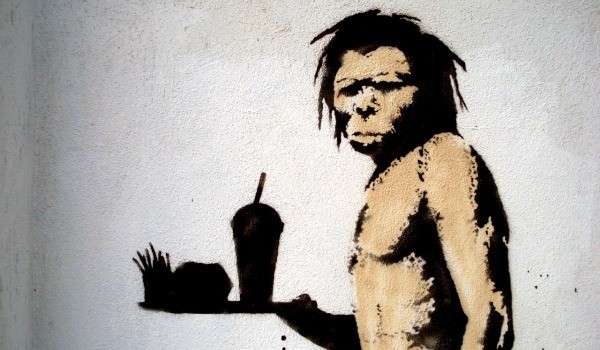The Paleo Diet Report (free download)

 Did you know that our genes are still 99.99% identical to those of our Paleolithic ancestors?
Did you know that our genes are still 99.99% identical to those of our Paleolithic ancestors?
Well neither do most people. In a fascinating 15 page report, Nikki Young, author of the Paleo Cookbook series reveals startling facts and compelling evidence in the case for modern-day human dietary reform and documents exactly where society has gone wrong in the kitchen.
The fact that our genes are still so closely linked with our ancestors surely means our diet should follow suit. Yet our ignorance, or perhaps our ego has gotten the better of us, and as this report reveals we have become our own worst enemy. Although their life expectancy was shorter, deaths were often caused by outside factors such as extreme weather, accidents, infections, and predatory animals. They did not suffer from chronic or degenerative diseases such as diabetes, cancer or heart disease. These diseases emerged only when we shifted to agriculture; modern diseases are the consequence of civilization, the result of a mismatch of our genetic makeup and our lifestyle._x009d_
These words are sadly all too familiar. In the modern era, ailments and conditions have become commonly accepted and at times it seems almost trendy to have a newly diagnosed skin complaint, muscle ache or food intolerance. The levels of exercise in modern-day society are laughable when compared to those of our ancestors who roamed, ran and sprinted up to 12 miles a day and you were thinking an hour in the gym was hard going.
The Paleo Diet Report highlights...
 This astonishing report highlights how the agricultural revolution has ruined the human physique. Our ancestors were taller, stronger and had bigger brains; albeit they may not have used them to the capacity we use ours today.
This astonishing report highlights how the agricultural revolution has ruined the human physique. Our ancestors were taller, stronger and had bigger brains; albeit they may not have used them to the capacity we use ours today.Even the meat we eat has 30% more fat than our ancestors hunted and killed. This is because the animals we consume are not wild animals by any stretch of the imagination. Without choice, animals sit around waiting to be slaughtered with inadequate space to exercise.
Our ancestors unwittingly ate a well-balanced diet consisting of 65% meat and 35% gathered food, this would have varied with hunting success and availability, but for the most part they simply depended on nature to dictate the play. Their diet was also naturally varied due to seasonal changes.
Vitamins and minerals were in the purest of abundance through berries, bulbs, seeds, fruits, flowers, melons, nuts, leaves, roots and stalks.
Grains were seldom present and cooked thoroughly if consumed at all, which goes a long way in explaining why wheat intolerance continues to plague society.
Processed foods were also absent from our ancestors diets, and as this report points out, what the human body needs is a high protein low carbohydrate diet and plenty of exercise.
Our bodies are not genetically equipped to handle processed carbohydrates, let alone an excess of them. Yet, we are often consuming excessive amounts which can result in a weakened immune system, diabetes, obesity and many other chronic illnesses with the Paleo diet the main source of carbohydrates is fruits and vegetables the same way it was for our ancestors.
This excellent report is the definitive guide to Paleo eating and provides factual information on the lifestyle of our ancestors. This report signals an essential wake-up call for those of us tolerating a less than healthy existence through poor diet.
Download The Paleo Diet Report PDF

[box type="info" align="alignleft" ]
The following exert is from Wikipedia
What is the Paleo Diet?
The Paleolithic diet is a modern nutritional plan based on the presumed diet of Paleolithic humans. It is based on several controversial premises,[1] the most important of which are: first, that human genetics have scarcely changed since the dawn of agriculture, which marked the end of the Paleolithic era, around 15,000 years ago; second, that modern humans are adapted to the diet or diets of the Paleolithic period; and third, that it is possible for modern science to discern what such diets consisted of.

Although there is a growing number of variations, the Paleolithic diet consists mainly of fish, grass-fed pasture-raised meats, eggs, vegetables, fruit, fungi, roots, and nuts, and excludes what are perceived to be agricultural products: grains, legumes, dairy products, potatoes, refined salt, refined sugar, and processed oils. Certain portions should be established for balance of nutrients to maintain homeostasis.
Proponents argue that modern human populations subsisting on traditional diets, allegedly similar to those of Paleolithic hunter-gatherers, are largely free of diseases of affluence and that Paleolithic diets in humans have shown improved health outcomes relative to other widely recommended diets.
The paleolithic diet is a controversial topic among dietitians and anthropologists.
The Paleolithic diet is also known as the "paleo diet", "paleo diet", "caveman diet", "Stone Age diet", and "hunter-gatherer diet"[/box]




































































































